Quadrilateral questions (questions about four-sided figures) on the CLT typically focus on rectangles (and squares, which are a type of rectangle), but they sometimes verge into other shapes like parallelograms and trapezoids. We will also cover questions about polygons with more than four sides, since they are fairly rare and are solved by dividing them into smaller shapes like triangles and quadrilaterals. You’ll see several word problems in the examples below, as the CLT frequently asks you to think about quadrilaterals in a real-life situation.
A park contains a rectangular swath of grass surrounded by a path uniformly feet in width. If the outer rim of the path has dimensions feet by feet, what is the area of the path, in square feet?
A. 400
B. 625
C. 1,000
D. 1,200
This problem is an excellent example of why drawing diagrams on your scratch paper is so important; it’s very difficult to visualize the situation correctly without a diagram. Give it a try! Your diagram should look something like this:
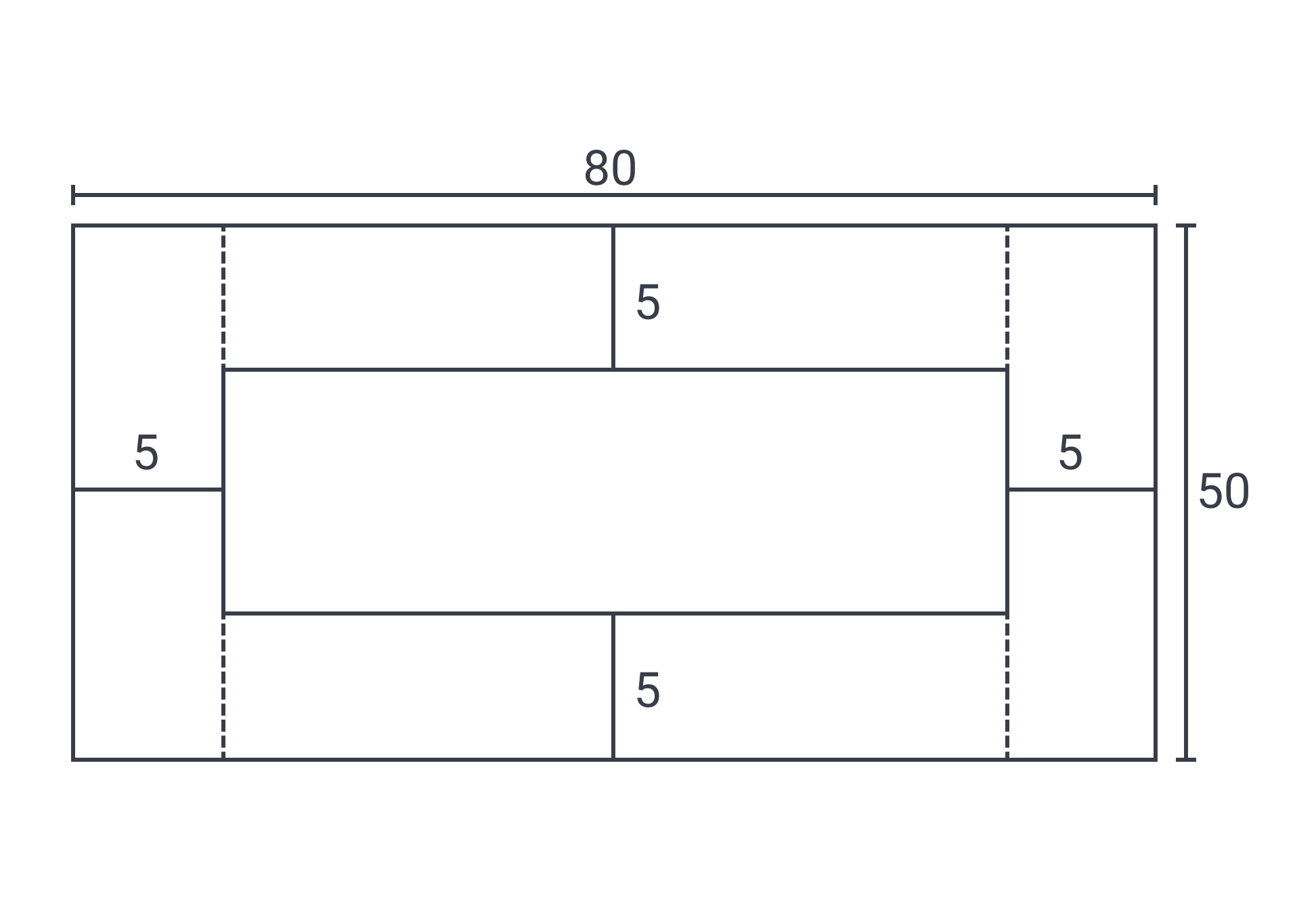
Note that the question describes an x setup on the outside of the path, not the inside (along the grass). This would be the first place where we could go wrong. Once we have those dimensions and the 5-foot-wide path clearly shown, we can approach the problem in one of two ways:
In addition to definitions, and since it’s helpful to see all the kinds of quadrilaterals and how they relate to each other, we are including the diagram below. We challenge you to recopy this for yourself and practice it until you can do it by memory!
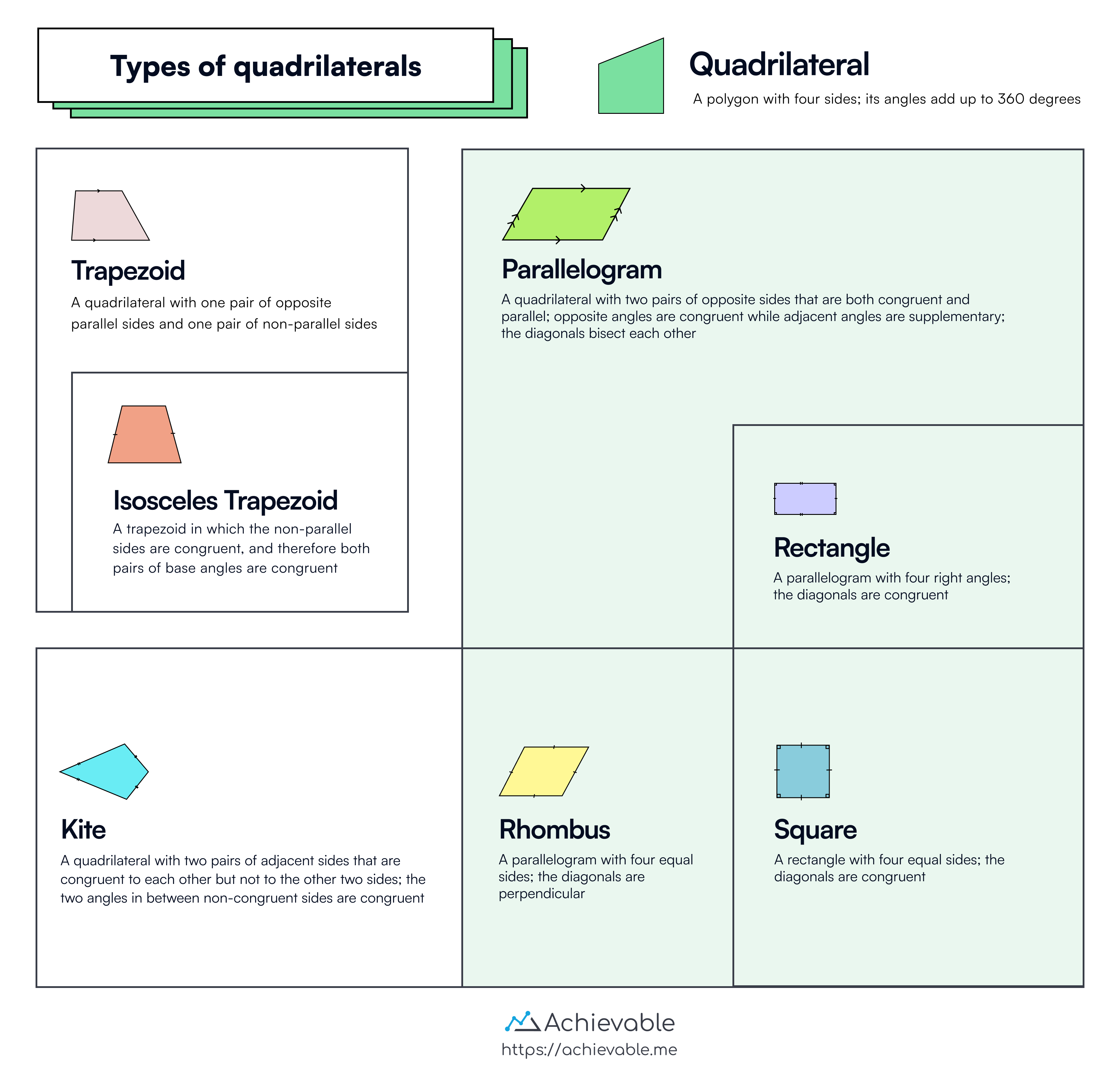
The main alternative to a simple quadrilateral question is one that pairs a quadrilateral with another figure–usually a triangle or a circle. When a question has multiple figures, typically the first thing to identify is what those shapes have in common. For example, when a square is inscribed in a circle, the diagonal of the square is the same as the diameter of the circle.
The most important formulas for quadrilaterals are for rectangles and squares:
We’ll also repeat here the formulas regarding angles in a polygon.
A student is planning a remodel of her bedroom including the purchase of a new desk. She wants the surface of the desk to take up no more than of the room’s square footage. If the area of the room is square feet and the desks available are all feet wide, how long, at most, can the student’s desk be? (Ignore the height of the desk in making your calculation.)
A. 3 feet
B. 4 feet
C. 5 feet
D. 6 feet
The answer is B. Sometimes CLT geometry problems will include a percentage or a fraction when considering comparisons in area. Fortunately, the total square footage is an even here so the maximum surface area of the desk is a clean square feet ( of ). If the desks are feet wide, then we need to divide by , because ( = x ). The desk can be up to feet long.
Rectangle is similar to rectangle . If the area of is square units and has a width of , which of the following must be true?
A. Both rectangles are squares.
B. Rectangle MNOP has a length of 12.
C. Side AB is perpendicular to side BC.
D. Rectangle ABCD has a length of 15.
The answer is C. This problem is tricky in that can be tempting to think we know more than we actually do. We have the width of one rectangle but we don’t have a corresponding width for the other rectangle; we have an area of one triangle but no corresponding area of the other. This means that we should stay away from answers like choices and ; there’s no way to find any of the unknown widths, lengths, or areas. Choice would be an eternal truism if it read the other way; all squares are rectangles, but since not all rectangles are squares, we don’t know if choice A is true.
The right answer is something that, surprisingly, we would have known all along without any information except that the two polygons are both rectangles. Since rectangles have all 90° angles, any two of their adjacent sides must be perpendicular. Side must be adjacent (connecting) to because they both contain , which marks a vertex of the rectangle.
The area of a rectangle is given by . If one of the sides measures , find the perimeter of the rectangle.
A.
B.
C.
D.
The answer is A. As with many other problems, we should draw the rectangle here, labeling one of the sides . (It doesn’t matter which side we choose; although it is traditional to make a rectangle’s length longer than its width, standardized tests don’t typically make this distinction. Also, since we’re just trying to come up with , the perimeter of the rectangle, it won’t matter which side we call and which side we call .)
We can use the rectangle area to understand that times something must equal . What is that something? Do you see the ratio between the terms of both binomials? This suggests that we might want to factor out something from ; the greatest common factor of that binomial is . If we factor out we get, you guessed it, . So we now know the two dimensions: by . Adding them together and doubling the result (don’t forget to double for the perimeter! If you forget, you’ll get answer ) gives us .
A student is thinking about parallelograms and comes up with the following conjecture:
The diagonals of a parallelogram are always perpendicular.
Which of the following is a counterexample that disproves the above statement?
A. A parallelogram in which all sides are units long.
B. A parallelogram whose diagonals create four right triangles.
C. A parallelogram with interior angles that are all .
D. A parallelogram with two sides of length units and two sides of length units.
The answer is D. You may remember, if you really excelled in geometry in school, that there’s a certain kind of parallelogram whose diagonals are perpendicular. (If you remember that, we’re impressed!) Let’s assume you don’t remember that property exactly and use some diagramming to support your thinking. First, picture a long, skinny parallelogram like the one in the figure below. (Is it us, or are we basically drawing the state of Tennessee?) Next to it, draw a parallelogram that is more squat, so that it appears its sides might be somewhere close to congruent (hint hint).
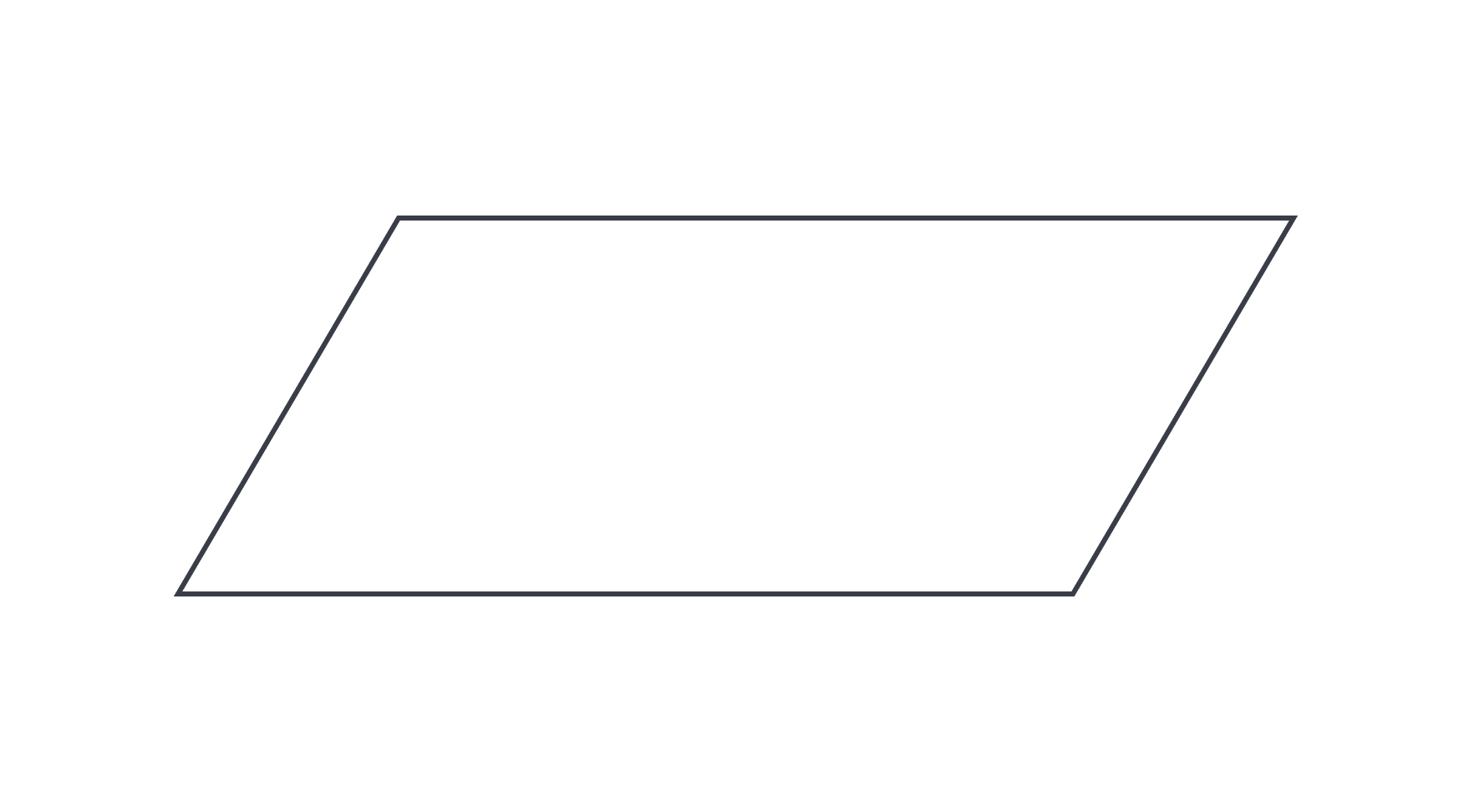
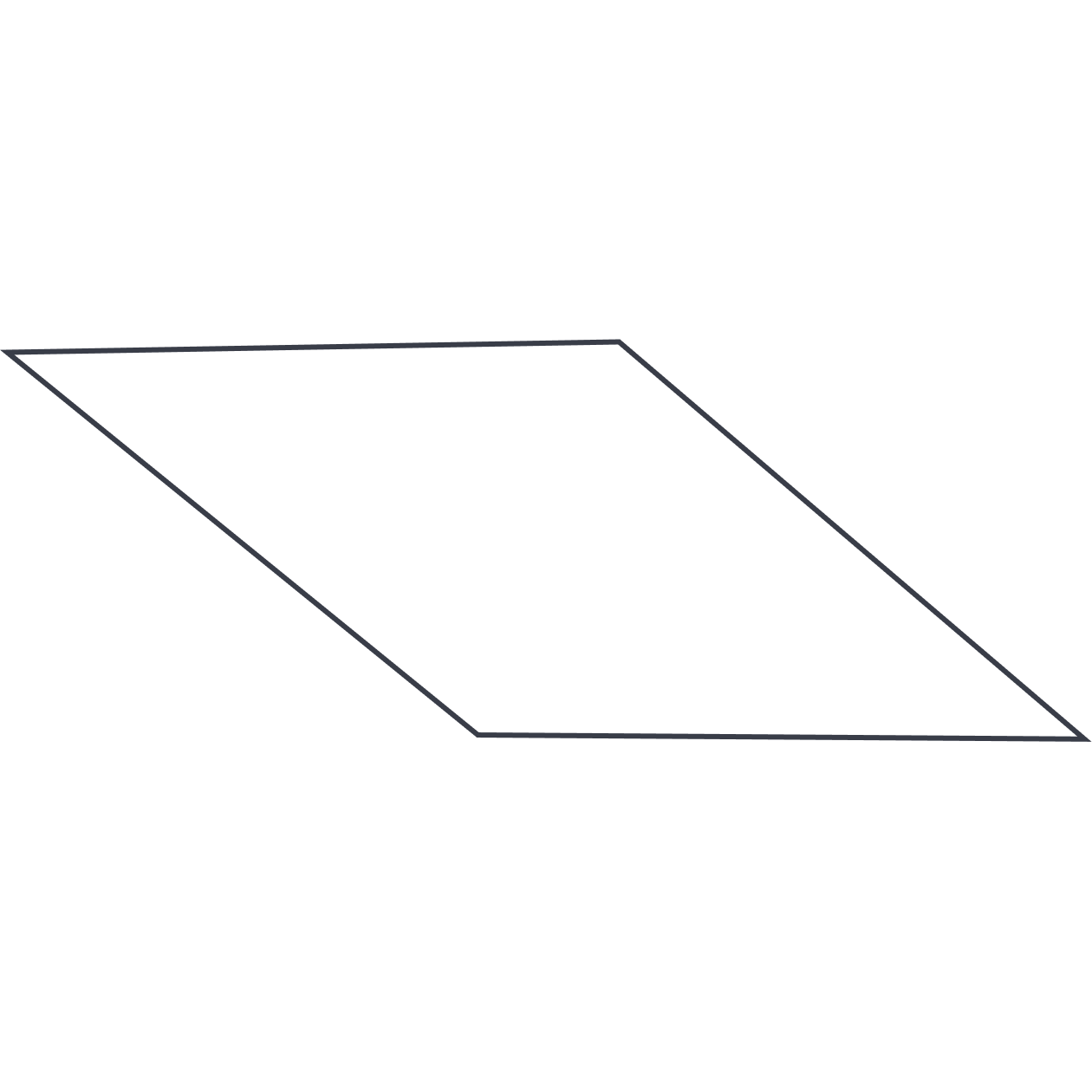
Now draw the two diagonals of both parallelograms. You may notice that the diagonals in the long, skinny parallelogram don’t seem to be anywhere close to perpendicular, but the diagonals of the other parallelogram could be. This moves us closer to the truth about perpendicular diagonals, that among parallelograms, only the rhombus (all sides congruent) has perpendicular diagonals.
With this in mind, we can eliminate answer choice A because it agrees with the student’s statement rather than violating it. Reading choice carefully shows us that it’s saying something identical to the student’s conjecture; perpendicular lines, by definition, create right angles. Choice is trickier because it brings up , but we’re looking for angles at the intersection of the diagonals, not at the vertices. What choice is telling us is that we have a rectangle. But the question is, is that rectangle a square? A non-square rectangle would be a nice counterexample here, but since we can’t rule out a square, and a square is a type of rhombus, choice leaves us uncertain. Choice is clearer because it resembles our first parallelogram: the long, skinny one. Understanding now that the student is talking only about parallelograms that are also rhombuses, we can safely choose answer as the counterexample.
A stop sign (octagonal in shape) has two identical horizontal, parallel scratches in it that stretch from one diagonal to another and divide the octagon into a central rectangle and two isosceles trapezoids above and below the rectangle. If each side of the stop sign has a length of inches, what is the combined surface area of the two trapezoids created by the parallel scratches?
A.
B.
C.
D.
The answer is D. This is another figure we should draw so that we can see clearly what’s happening. The question asks us to focus just on the trapezoids, so we can ignore the rectangle unless that helps us with the trapezoid. It looks like the only thing we know about each trapezoid is all the slant heights are 6 inches long because they are identical to the sides of the octagon. We would do well to divide each trapezoid into a central rectangle with triangles on the end, like so:
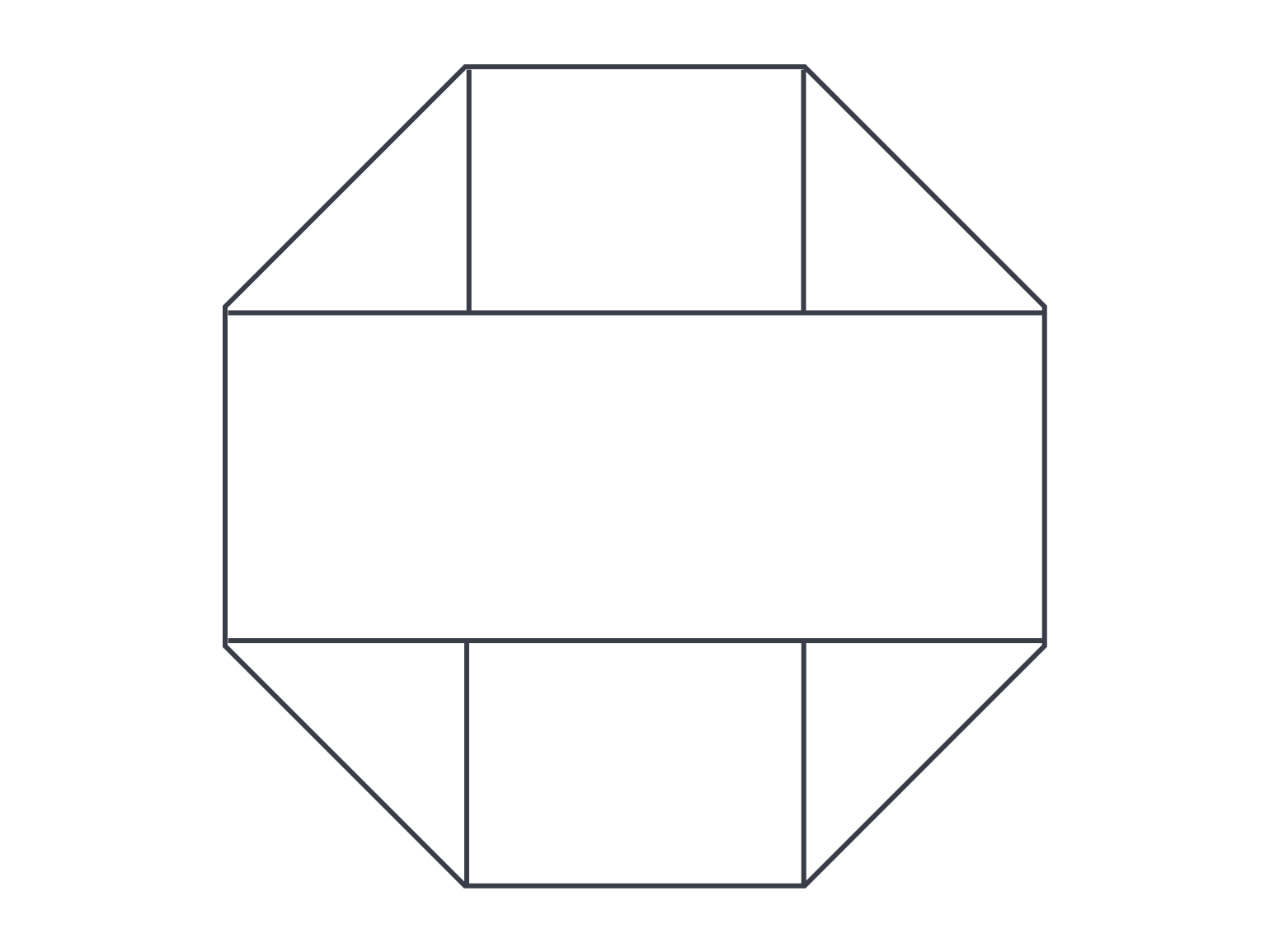
These triangles appear to be isosceles right triangles (), and indeed they are. The proof of that fact has to do with the fact that octagons have interior angles, which in this case divide into and . But even if you are uncertain of that, it makes sense on standardized tests to assume that shapes appearing in familiar ways are in fact familiar (for example, if it looks like a right angle, it probably is!). Since the hypotenuse of these little triangles is , we work backward to the legs using the relationship and discover that the legs are in length. So the area of each of the triangles is . also becomes a side of the rectangle, while the other side is because it mirrors the side of the octagon. So each of the two rectangles has an area of . Multiplying that area by two because there are two rectangles (one inside each trapezoid) and multiplying the triangle area by to account for all the triangles, then adding it all together, we come to .
That result doesn’t match any of the answer choices. What went wrong? Nothing, as it turns out; we have to remember that, according to the rules of algebra, a radical (in this case a square root) in the denominator means the fraction can be further simplified. So we must transform the second term in our answer. We rationalize the denominator by multiplying both top and bottom by . This results in in the denominator, which divides evenly into the numerator of . The result is , answer choice .
Sign up for free to take 5 quiz questions on this topic